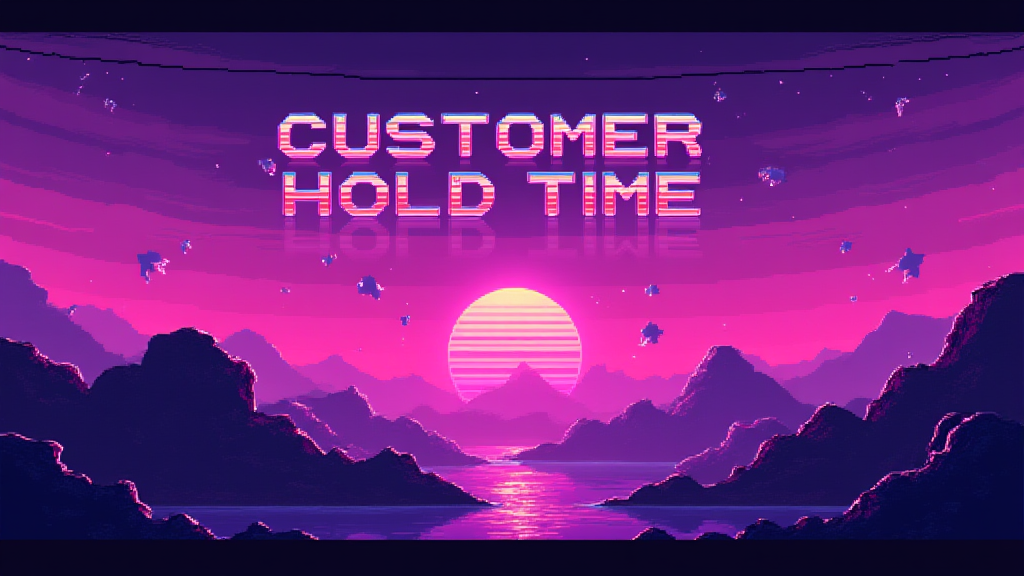Customer Hold Time: Key Metric for Service Quality

Published on: October 01, 2024
Customer Hold Time is a critical metric in customer service operations, measuring the duration a customer waits on the line before speaking with a representative. This key performance indicator (KPI) directly impacts customer satisfaction, operational efficiency, and overall service quality. 📞⏱️
Understanding Customer Hold Time
Customer Hold Time encompasses the period from when a customer's call is answered by the system to when they connect with a live agent. It's a crucial factor in the customer experience and can significantly influence their perception of a company's service quality.
Importance in Sales and Revenue Operations
For Sales and Revenue Operations teams, Customer Hold Time is more than just a number. It's a vital metric that can impact:
- Customer Satisfaction: Longer hold times often lead to frustrated customers and potential lost sales.
- Brand Perception: Consistently short hold times can enhance a company's reputation for excellent service.
- Customer Retention: Efficient service, including minimal hold times, can improve customer loyalty.
- Operational Efficiency: Monitoring and optimizing hold times can lead to better resource allocation and cost management.
Industry Standards and Benchmarks
While acceptable Customer Hold Times can vary by industry, some general benchmarks include:
| Industry | Average Hold Time |
|---|---|
| Retail | 1-2 minutes |
| Banking | 2-3 minutes |
| Airlines | 3-5 minutes |
| Telecommunications | 2-4 minutes |
It's important to note that these are averages, and top-performing companies often strive for even shorter hold times. 🏆
Strategies to Reduce Customer Hold Time
Implementing effective strategies to minimize hold times can significantly improve customer service quality:
- Implement Call-Back Systems: Allow customers to request a call-back instead of waiting on hold.
- Optimize Staffing: Use historical data to predict peak call times and staff accordingly.
- Enhance Self-Service Options: Provide robust online resources and chatbots to reduce call volume.
- Train for Efficiency: Equip agents with the skills and tools to handle inquiries quickly and effectively.
- Monitor and Analyze: Regularly track hold times and identify areas for improvement.
The Impact of Technology on Hold Times
Modern technology offers innovative solutions to manage and reduce Customer Hold Times:
- AI-powered chatbots for instant responses
- Intelligent call routing systems
- Real-time analytics for proactive management
- Omnichannel support to distribute customer inquiries
Calculating Average Hold Time
To measure your organization's performance, use this formula to calculate Average Hold Time:
\[ \text{Average Hold Time} = \frac{\text{Total Hold Time for All Calls}}{\text{Total Number of Calls}} \]
Regularly monitoring this metric can help identify trends and areas for improvement in your customer service operations. 📊
Conclusion
Customer Hold Time is a pivotal metric in assessing and improving customer service quality. By understanding its importance, setting benchmarks, and implementing strategies to reduce hold times, businesses can enhance customer satisfaction, operational efficiency, and ultimately, their bottom line.
As you evaluate your own customer service operations, consider asking yourself:
- How does our current Average Hold Time compare to industry standards?
- What technologies can we implement to reduce hold times?
- How can we better predict and staff for peak call times?
- Are there opportunities to enhance our self-service options?
- How can we use hold time data to improve our overall customer experience?
By addressing these questions, you can develop a comprehensive strategy to optimize Customer Hold Time and elevate your customer service to new heights. 🚀

















